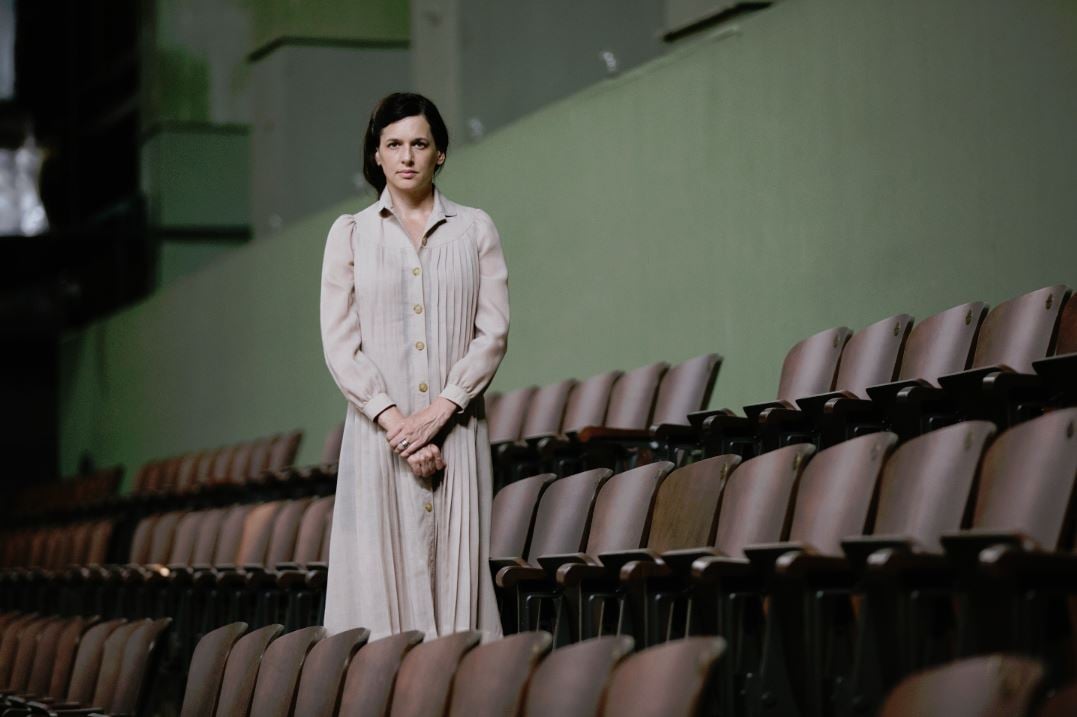
“An Occupation of Loss,” Taryn Simon’s world premiere performance at the Park Avenue Armory in New York, is billed as a thoroughly-researched survey on how the world grieves. For the project, which runs from September 13–25, the artist invited 30 professional mourners from Armenia, Cambodia, Ecuador, and 16 other countries, to the 55,000-square-foot Wade Thompson Drill Hall.
Prior to Tuesday night’s 8 p.m. viewing, I took a seat, along with some 40 odd guests, in a quartered-off area of the Park Avenue Armory’s East 67th Street entrance. A staffer reminded the group that photography was prohibited “out of respect for the artists,” before shepherding us up two flights of stairs bolted against the building’s façade.
An indoor balcony overlooks 11 colossal spires, designed by Simon in collaboration with Rem Koolhaas’s OMA, standing in communion at the center of the formidable hall. Two vertical strips of LED lights facing the 45-foot-tall installation, as well as a horizontal strip behind the monuments, cast a soft, theatrical halo in the vast darkness. As we approached the balcony’s edge, a slow-moving procession of performers emerged from private doors, either alone or in groups of two or three, and filed into their respective towers. There, sitting on ledges in their separate nodes, the professional mourners waited for us to descend the staircase and peer into their echo chambers of song, silence, and wails.
Taryn Simon, installation rendering of An Occupation of Loss (2016). Rendering by OMA New York, courtesy of Park Avenue Armory.
In the brief 30-minute time frame we were allotted, guests rushed to witness each of the mourners in what felt like a game of musical chairs. On the farthest spire moving counter-clockwise, three Armenian men dressed in black delivered somber melodies accompanied by a wooden flute and a tambourine. In the neighboring tower, two Bhutanese monks chanted with a gong and a bell. Nearby, two Greek mourners supported the lyrical lamentations of their female lead in polyphonic song. As I approached the next room, a guard stopped me from entering, whispering: “These women mourn in the absence of men.”
In the context of Simon’s body of work, this project can be read as a rough extension of her ideas in “Image Atlas,” the artist’s collaboration with computer programmer Aaron Schwartz in 2012. In a venture that artnet News’ Ben Davis described as Simon’s attempt at “recovering a sense of the local,” the pair generated a search engine for words and phrases across 60 countries—emphasizing that the different results it yielded for each place is evidence of the cultural differences that exist around the world.
Conceptually, “An Occupation of Loss” achieves this, albeit perhaps at the expense of its subjects, who remain little more than exotic representatives of other countries. Had Simon enlisted the help of more professional mourners from across the world—for example, by employing an Italian priest or an American preacher—the presentation would have made a stronger case for the universal agony of loss. But in its current form, it is only a spectacle.
“Taryn Simon: An Occupation of Loss” is at the Park Avenue Armory from September 13–25.